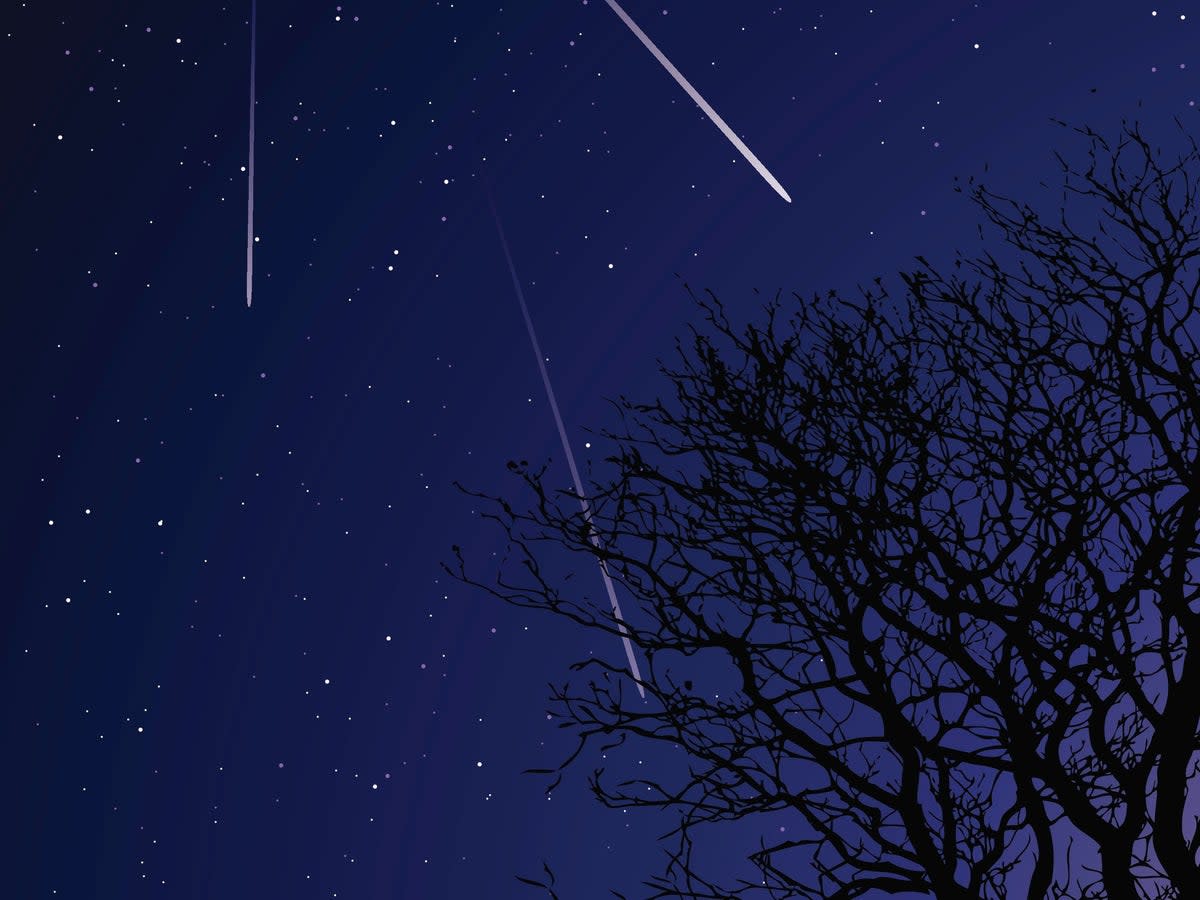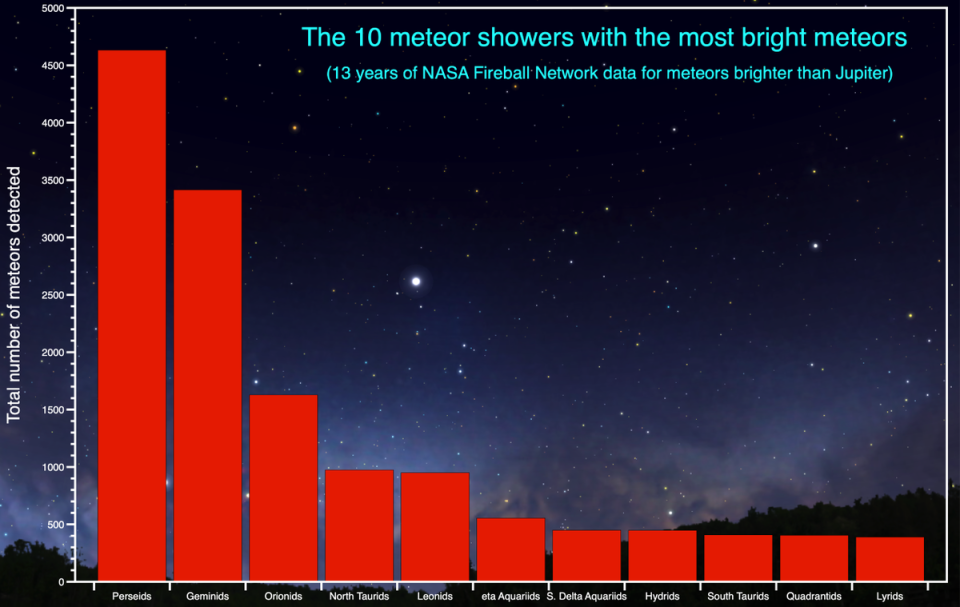Orionid meteor shower this week won’t be as intense as what’s to come in 2023, Nasa expert says

“Bright,” “fast,” and “beautiful” are all words Nasa uses to describe the annual Orionid meteor shower which could be streaking across the skies near you on Thursday and Friday.
While they are not the most intense of meteor showers, “the Orionids are a reliable medium intensity meteor shower,” William Cooke, the lead at Nasa’s Meteoroid Environment Office, told The Independent in an interview this week.
The 2022 Orionids will peak on Friday 21 October, and may average around 20 meteors per hour. Skywatchers may be able to see some Orionids a day or two before and after the peak.
The Orionids may appear to originate from the Constellation Orion, hence their name, but sky watchers can catch the shooting stars anywhere in the nighttime sky. In some years, Nasa recommends looking for Orionid meteors at 45 to 90 degrees from the Constellation Orion, but the 2022 Orionids shower will face a wrinkle.
“Let’s get the bad news out of the way: the waning crescent moon will be visible during the peak night,” Dr Cooke said, “so there will be some moonlight interference.”
While the glare of the Moon won’t be as intense as during a full Moon, those hoping to catch sight of the Orionids should try to look away from the Moon as much as possible.
“The best thing meteor shower observers can do is to lie flat on their back in a relatively dark site,” Dr Cooke said. “If you stare at the moon, you’re not going to see many meteors. So you want to position yourself to take in as much sky as you can, but look away from the Moon.”
The good news, he adds, is that the Orionids produce a good number of streaking meteors and bright fireballs owing to their hitting the Earth’s atmosphere at a zippy 148,000 miles per hour.
“If you look at our Meteor camera data, the Orionids are our number three as far as producing fireballs behind the Perseids and the Geminids,” he said, referring to the August and December meteor showers respectively. “So the good news is the Orionids have a fair number of bright meteors so the Moon won’t ruin the show.”

The full Moon did ruin the show for anyone hoping to catch the Draconid meteor shower, which peaked on 9 October this year — just in time for the already very faint meteors to be washed out by the full Hunter’s Moon.
“Unless you had a very expensive meteor radar, you did not see Draconids this year, and that was kind of expected,” Dr Cooke said.
Even the Orionids of 2022 will not quite live up to those of recent memory, he added. Between 2006 and 2009, the average rate of Orionid meteors as much as tripled to 70 meteors an hour due to variability in the source of the meteors: The long trail of dust left behind by Comet Halley on its 76-year orbit around the Sun.
“In 2006 through 2009, Jupiter’s gravity kind of concentrated [Comet Halley] material in Earth’s path, and we no longer hit that material anymore,” Dr Cooke said. “So you can thank the gravitational bully of the Solar System, Mr. Jupiter, for the increased activity in 2006 and 2009.”
It’s unlikely that Jupiter will engender such an intense Orionid meteor shower anytime soon, but it may provide a gift for sky watchers in 2023: the sister meteor shower to the Orionids, the eta Aquarids seen in early May, also originate with material from Comet Halley, and are set to see a boost.
“The eta Aquarid rates will double next year, and the year after they may even triple,” Dr Cooke said. “So while the Orionids are going to be just the steady, moderate level shower, its sister, the eta Aquarids are going to see significant activity over the next two years.”
That might compensate for the rest of 2022, which will likely see moonlight wash out the remaining significant meteor showers of the year, the Leonids of November and Geminids in December.
“Sometimes you just have the misfortune that the Moon is always messing with the shower at the time of their peaks, and 2022 was one of those bad geometry years,” Dr Cooke said. “So 2022 was kind of a sucky year for Meteor showers — 2023 will be better.”

